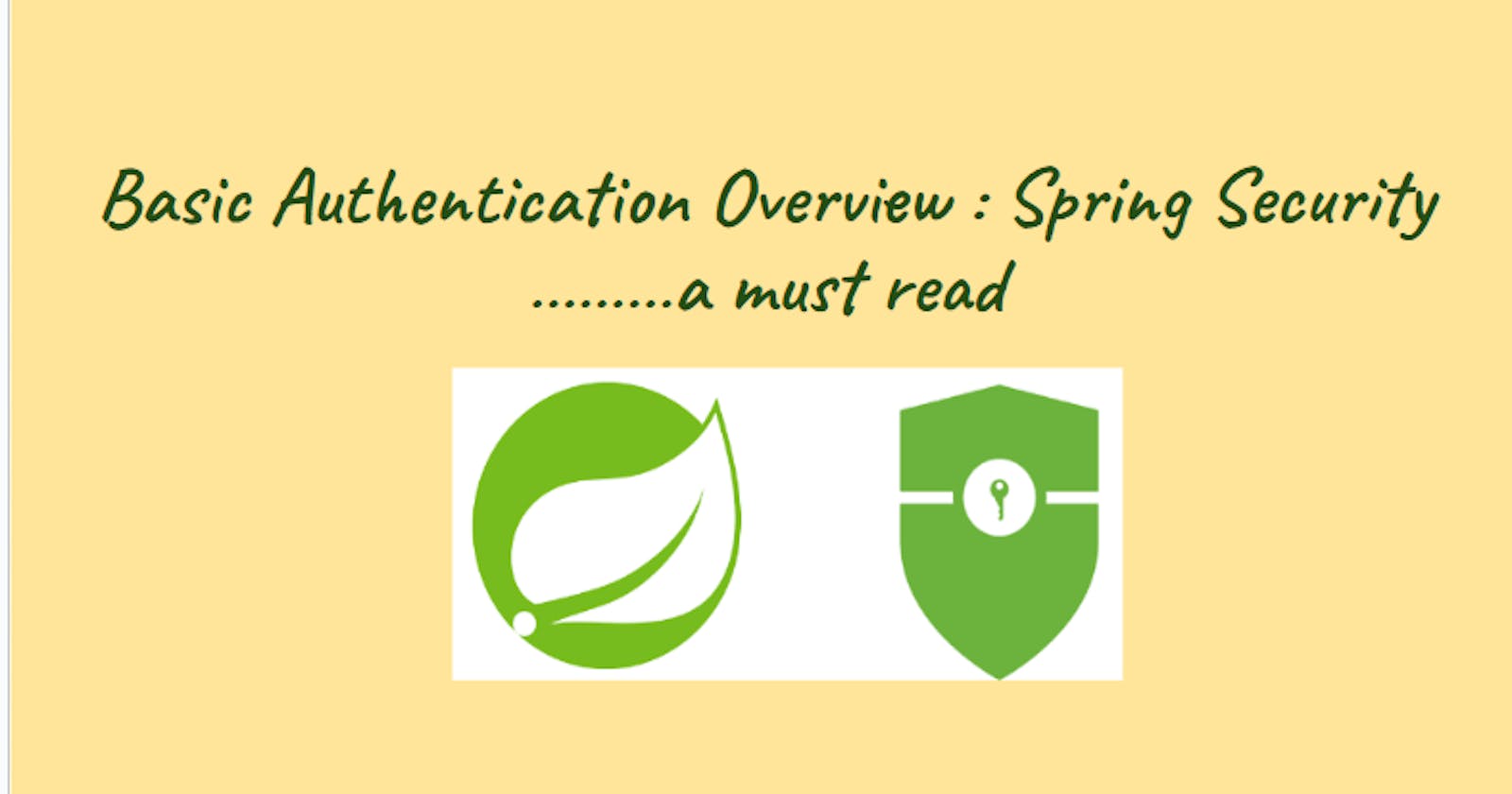Basic authentication is a simple authentication scheme built into the HTTP protocol. With basic authentication, a web browser or other client program sends the username and password to the server, which then verifies them.
Spring Security provides built-in support for basic authentication
What is Basic Authentication?
Basic Authentication is one of the simplest and most widely used methods of HTTP authentication. It works by requiring the client (typically a web browser or an HTTP client library) to include a username and password in the HTTP request header. These credentials are Base64 encoded and included in an Authorization header. The server then validates the credentials and grants access if they are correct.
Here's how the Basic Authentication process works in a nutshell:
The client sends an HTTP request to the server.
The client includes an Authorization header with the Base64-encoded username and password.
The server decodes the credentials, checks them against a user database, and grants access if they are valid.
If the credentials are invalid, the server returns a 401 Unauthorized response.
Spring Security makes it straightforward to implement Basic Authentication in your web applications.
Setting Up Spring Security for Basic Authentication
To get started with Basic Authentication in a Spring application, you need to include Spring Security in your project's dependencies. You can do this by adding the following dependency to your pom.xml (if you're using Maven):

Once you've added the dependency, you can configure Basic Authentication by creating a simple Spring Security configuration class. For instance:
import org.springframework.context.annotation.Bean;
import org.springframework.context.annotation.Configuration;
import org.springframework.security.config.annotation.web.builders.HttpSecurity;
import org.springframework.security.config.annotation.web.configuration.EnableWebSecurity;
import org.springframework.security.core.userdetails.User;
import org.springframework.security.core.userdetails.UserDetails;
import org.springframework.security.provisioning.InMemoryUserDetailsManager;
@Configuration
@EnableWebSecurity
public class SecurityConfig {
@Bean
public InMemoryUserDetailsManager inMemoryUserDetailsManager() {
UserDetails user = User
.withDefaultPasswordEncoder()
.username("user")
.password("password")
.roles("USER")
.build();
return new InMemoryUserDetailsManager(user);
}
@Override
protected void configure(HttpSecurity http) throws Exception {
http
.authorizeRequests()
.antMatchers("/public/**").permitAll()
.anyRequest().authenticated()
.and()
.httpBasic();
}
}
In this example:
We configure a simple
InMemoryUserDetailsManagerwith a single user, "user" with the password "password."We use the
configure(HttpSecurity http)method to specify which URLs should be protected and require authentication. In this case, all URLs except those under "/public/" are protected.We enable Basic Authentication with the
httpBasic()method.
Conclusion
Basic Authentication is a straightforward method for securing your web applications, especially when you need a quick and simple solution. Spring Security simplifies the implementation of Basic Authentication by providing configuration options and authentication mechanisms, as demonstrated in this blog post.
Remember, while Basic Authentication is easy to set up, it may not be the most secure method, as it relies on sending credentials with each request. In scenarios where higher security is required, you should consider using more advanced authentication mechanisms, like OAuth2 or JWT (JSON Web Tokens).
In your application, always ensure the proper storage and encryption of user credentials, and regularly update your security configurations to stay ahead of potential threats. Spring Security's flexibility and robust features can help you achieve this while keeping your application safe and secure.
Happy Coding🚀
